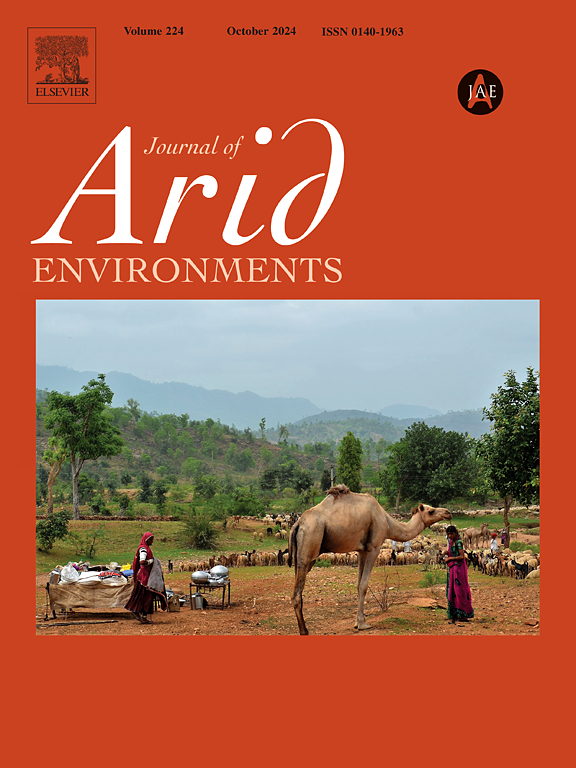Modelling soil erosion risk in rural sub-catchments of Zimbabwe using RUSLE, remote sensing and machine learning
IF 2.5
3区 环境科学与生态学
Q2 ECOLOGY
引用次数: 0
Abstract
The study modelled soil erosion risk in the Shashe and Tugwi–Zibagwe rural sub-catchments in Zimbabwe. To derive land use and land cover (LULC) thematic maps for the years 2016, 2020 and 2023, analysis ready data (Sentinel 2) were applied using the Random Forest (RF) algorithm in the Google Earth Engine (GEE) platform. The Revised Universal Soil Loss Equation (RUSLE) model was applied to understand the drivers of soil loss in the sub-catchments. The rainfall erosivity (R), soil erodibility (K), length slope (LS), crop management (C) and conservation support practice factors (P) were derived in GEE and applied as input to determine soil erosion risk. The findings of the study show that, the Shashe sub-catchment had mean soil losses of 15.75, 45.25, and 23.51 t ha−1 year−1 for 2016, 2020, and 2023, respectively. In the Tugwi-Zibagwe sub-catchment, the mean soil losses were 11.62, 18.45, and 37.34 t ha−1 year−1 for the same years. The results also show that LULC changes were one of the major drivers to soil loss in the rural dominated sub-catchments. Results further show that, the area under cultivation was exposed to severe erosion which averaged 16–48 t ha−1 year−1 when compared to other land covers in the study areas. In conclusion, of all the two sub-catchments the Shashe experiences severe soil loss than Tugwi-Zibagwe due to variations in land use and covers. Soil loss also tends to be considerably high in areas along drainage networks and where vegetation clearance is evident. These findings highlight the pressing need for up-to-date soil management approaches to improve soil conservation in rural dominated sub-catchments of Zimbabwe.
利用RUSLE、遥感和机器学习对津巴布韦农村分集水区的土壤侵蚀风险进行建模
该研究模拟了津巴布韦Shashe和Tugwi-Zibagwe农村集水区的土壤侵蚀风险。为了获得2016年、2020年和2023年的土地利用和土地覆盖(LULC)专题地图,利用谷歌地球引擎(GEE)平台上的随机森林(RF)算法,应用分析准备数据(Sentinel 2)。应用修正的通用土壤流失方程(RUSLE)模型分析了流域土壤流失的驱动因素。在GEE中导出了降雨侵蚀力(R)、土壤可蚀性(K)、长度坡度(LS)、作物管理(C)和保护支持实践因子(P),并将其作为确定土壤侵蚀风险的输入。研究结果表明,2016年、2020年和2023年,沙舍子集水区平均土壤流失量分别为15.75、45.25和23.51 tha−1年−1年−1年。图格维—齐巴格韦子流域相同年份的平均土壤流失量分别为11.62、18.45和37.34 t / h。结果还表明,在以农村为主的子流域,土地利用价值变化是土壤流失的主要驱动因素之一。结果进一步表明,与研究区其他土地覆被相比,栽培区遭受严重的侵蚀,平均为16-48 tha−1年−1。总之,由于土地利用和覆盖的变化,在所有两个子集水区中,沙舍比图圭-齐巴格韦遭受了严重的土壤流失。在排水网沿线和植被清除明显的地区,土壤流失也往往相当高。这些发现强调迫切需要最新的土壤管理方法,以改善津巴布韦农村占主导地位的子集水区的土壤保持。
本文章由计算机程序翻译,如有差异,请以英文原文为准。
求助全文
约1分钟内获得全文
求助全文
来源期刊

Journal of Arid Environments
环境科学-环境科学
CiteScore
5.70
自引率
3.70%
发文量
144
审稿时长
55 days
期刊介绍:
The Journal of Arid Environments is an international journal publishing original scientific and technical research articles on physical, biological and cultural aspects of arid, semi-arid, and desert environments. As a forum of multi-disciplinary and interdisciplinary dialogue it addresses research on all aspects of arid environments and their past, present and future use.
 求助内容:
求助内容: 应助结果提醒方式:
应助结果提醒方式:


